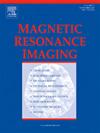The relative contrast ratio of malignant bone lesion is highest on relative Fat Fraction maps compared with T1-weighted and b900 DWI images
IF 2.1
4区 医学
Q2 RADIOLOGY, NUCLEAR MEDICINE & MEDICAL IMAGING
引用次数: 0
Abstract
Introduction
Whole-body MRI (WB-MRI) is increasingly used in clinical practice for detection of malignant bone disease. A high relative contrast ratio (RCR) of malignant bone lesions compared with normal bone can improve disease detection in breast, prostate and myeloma malignancies. However, the RCR of malignant bone lesions on T1w, DWI and relative Fat Fraction (rFF) maps derived from Dixon T1w have not been compared.
Methods
110 baseline WB-MRI of patients with suspected malignant bone lesions were reviewed retrospectively. On each scan, up to four active bone lesions were identified, one each at the cervicothoracic spine, lumbosacral spine, pelvis and extremity, and their ROI signal intensity measured on rFF, T1w and DWI b = 900. The signal intensity of background bone was measured by placing an ROI on the nearest normal-appearing bone to each lesion, for each sequence. The mean lesion signal-to-background ratio (taken as RCR) for each lesion was calculated. We compared the RCR of bone lesions on rFF, T1w and DWI (Mann-Whitney test).
Results
The median rFF RCR of malignant bone lesions was highest compared with normal bone marrow than that of T1w (p < 0.0001) and DWI (p < 0.0001). There was no significant difference in the median rFF RCR of malignant bone lesions from breast cancer, myeloma and prostate cancer (p > 0.017, Bonferroni correction) or according to their anatomical locations (p > 0.012, Bonferroni correction).
Conclusions
Malignant bone lesion RCR measured by lesion/background signal intensity was higher on rFF than on T1w and DWI b = 900 in patients with prostate, breast and myeloma malignancies, indicating its value for disease detection.
相对脂肪分数图与t1加权和b900 DWI图像相比,恶性骨病变的相对对比度最高。
全身磁共振成像(WB-MRI)越来越多地应用于临床恶性骨病的检测。与正常骨相比,恶性骨病变的高相对对比度(RCR)可以提高乳腺、前列腺和骨髓瘤恶性肿瘤的疾病检出率。然而,恶性骨病变在T1w上的RCR、DWI和由Dixon T1w得出的相对脂肪分数(rFF)图尚未进行比较。方法:回顾性分析110例疑似恶性骨病变患者的基线WB-MRI资料。在每次扫描中,发现多达四个活动性骨病变,分别位于颈胸椎、腰骶椎、骨盆和四肢,并在rFF、T1w和DWI上测量其ROI信号强度 = 900。背景骨的信号强度通过将ROI放置在离每个病变最近的正常骨骼上来测量。计算每个病灶的平均病灶信本比(RCR)。比较rFF、T1w和DWI对骨病变的RCR (Mann-Whitney test)。结果:恶性骨病变的中位rFF RCR与正常骨髓相比高于T1w (p 0.017,Bonferroni校正)或按其解剖位置(p > 0.012,Bonferroni校正)。结论:在前列腺、乳腺、骨髓瘤恶性肿瘤患者中,rFF上病变/背景信号强度测量的恶性骨病变RCR高于T1w和DWI b = 900,说明其对疾病的检测价值。
本文章由计算机程序翻译,如有差异,请以英文原文为准。
求助全文
约1分钟内获得全文
求助全文
来源期刊

Magnetic resonance imaging
医学-核医学
CiteScore
4.70
自引率
4.00%
发文量
194
审稿时长
83 days
期刊介绍:
Magnetic Resonance Imaging (MRI) is the first international multidisciplinary journal encompassing physical, life, and clinical science investigations as they relate to the development and use of magnetic resonance imaging. MRI is dedicated to both basic research, technological innovation and applications, providing a single forum for communication among radiologists, physicists, chemists, biochemists, biologists, engineers, internists, pathologists, physiologists, computer scientists, and mathematicians.
 求助内容:
求助内容: 应助结果提醒方式:
应助结果提醒方式:


